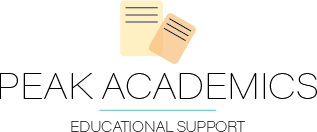Working memory is an executive function used to complete daily tasks. Strong working memory skills help students recall and apply information over shorter periods of time. Many of these skills are applied in daily routines such as following 2-3 step directions and responding to questions. And while these skills help children perform day-to-day activities, they can also support children’s reading proficiency. One key component of a working memory model is the phonological loop, also referred to as the phonological working memory. This component helps the brain understand, retain, and reproduce sounds spoken, or written. With a strong phonological working memory, children can increase their vocabulary, process information, and develop reading skills.
There are many different ways to practice phonological working memory by focusing on phonological awareness skills, like rhyming, blending, segmenting, and deleting/changing sounds in a spoken word.
Nonsense Words
Nonsense words are often called pretend words, or fake words, such as fep or tig. These words are often used to test students’ working memory and reading skills. Children can practice these at home with nonsense word lists. Nonsense words may follow a specific pattern like CVC, CVCe, vowel teams, and more! Your child can practice nonsense words by reading them aloud, repeating them, blending sounds, or segmenting all of the individual sounds.
Blending
Blending and segmenting different word parts can be tricky tasks for beginning readers, second language learners, and students who are struggling with phonological awareness skills. Blending can sound different for each child based on their abilities. You can practice blending with your child by saying individual sounds in a word (like /b/ /a/ /t/) and asking students to blend the word to make (bat). This same skill can be practiced with syllables (/cup/ + /cake/= cupcake).
Rhyming
Rhyming words can be practiced through repetition, selecting, and producing. Students can simply repeat rhymes back to you, decide if two words rhyme, say a word that rhymes with a given word, choose the rhyming words in a sentence, or even find the odd word in a group of rhyming words. There are plenty of different ways to practice, such as family packs or games like Bingo!
Sound Manipulation
Adding, deleting, and substituting are all types of sound manipulation children can practice to work on their phonological awareness. Adding refers to the ability to add new sounds or syllables (add cake to cup= cupcake), deleting is when children are able to remove sounds from a word (say stuck without s), and substituting refers to changing sounds in a word (say chip, then change ch to sh). This skill is considered to be more advanced and may take extra practice! Playing games that support these skills will help children succeed in their classroom, at home, and while reading independently.
Phonological awareness and working memory are skills that can be developed simultaneously, but are both important for your child’s reading success and overall development. These skills are often assessed during report cards and on reading assessments in school. The more children practice at home, the more advanced their reading may become.
Written by Ami Z.




